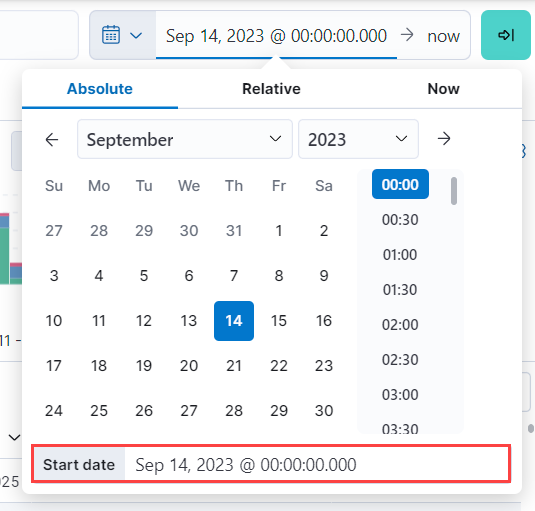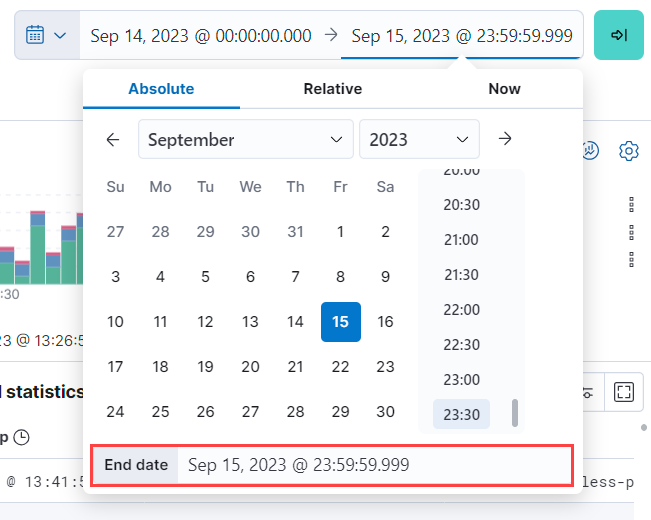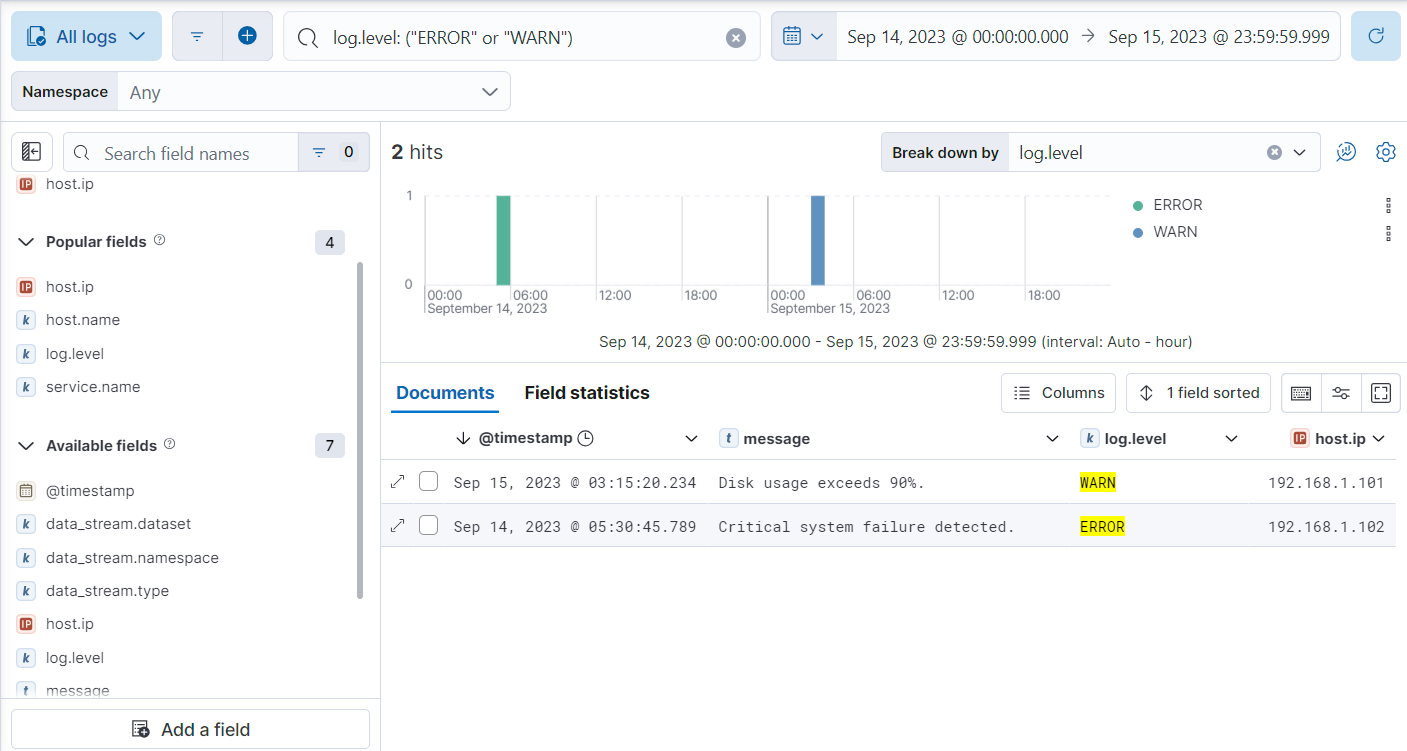- Elastic Cloud Serverless
- Elasticsearch
- Elastic Observability
- Get started
- Observability overview
- Elastic Observability Serverless billing dimensions
- Create an Observability project
- Quickstart: Monitor hosts with Elastic Agent
- Quickstart: Monitor your Kubernetes cluster with Elastic Agent
- Quickstart: Monitor hosts with OpenTelemetry
- Quickstart: Unified Kubernetes Observability with Elastic Distributions of OpenTelemetry (EDOT)
- Quickstart: Collect data with AWS Firehose
- Get started with dashboards
- Applications and services
- Application performance monitoring (APM)
- Get started with traces and APM
- Learn about data types
- Collect application data
- View and analyze data
- Act on data
- Use APM securely
- Reduce storage
- Managed intake service event API
- Troubleshooting
- Synthetic monitoring
- Get started
- Scripting browser monitors
- Configure lightweight monitors
- Manage monitors
- Work with params and secrets
- Analyze monitor data
- Monitor resources on private networks
- Use the CLI
- Configure a Synthetics project
- Multifactor Authentication for browser monitors
- Configure Synthetics settings
- Grant users access to secured resources
- Manage data retention
- Scale and architect a deployment
- Synthetics Encryption and Security
- Troubleshooting
- Application performance monitoring (APM)
- Infrastructure and hosts
- Logs
- Inventory
- Incident management
- Data set quality
- Observability AI Assistant
- Machine learning
- Reference
- Get started
- Elastic Security
- Elastic Security overview
- Security billing dimensions
- Create a Security project
- Elastic Security requirements
- Elastic Security UI
- AI for Security
- Ingest data
- Configure endpoint protection with Elastic Defend
- Manage Elastic Defend
- Endpoints
- Policies
- Trusted applications
- Event filters
- Host isolation exceptions
- Blocklist
- Optimize Elastic Defend
- Event capture and Elastic Defend
- Endpoint protection rules
- Identify antivirus software on your hosts
- Allowlist Elastic Endpoint in third-party antivirus apps
- Elastic Endpoint self-protection features
- Elastic Endpoint command reference
- Endpoint response actions
- Cloud Security
- Explore your data
- Dashboards
- Detection engine overview
- Rules
- Alerts
- Advanced Entity Analytics
- Investigation tools
- Asset management
- Manage settings
- Troubleshooting
- Manage your project
- Changelog
Filter and aggregate logs
editFilter and aggregate logs
editFilter and aggregate your log data to find specific information, gain insight, and monitor your systems more efficiently. You can filter and aggregate based on structured fields like timestamps, log levels, and IP addresses that you’ve extracted from your log data.
This guide shows you how to:
- Filter logs: Narrow down your log data by applying specific criteria.
- Aggregate logs: Analyze and summarize data to find patterns and gain insight.
Before you get started
editRequired role
The Admin role or higher is required to create ingest pipelines and set the index template. To learn more, refer to Assign user roles and privileges.
The examples on this page use the following ingest pipeline and index template, which you can set in Developer Tools. If you haven’t used ingest pipelines and index templates to parse your log data and extract structured fields yet, start with the Parse and organize logs documentation.
Set the ingest pipeline with the following command:
PUT _ingest/pipeline/logs-example-default { "description": "Extracts the timestamp log level and host ip", "processors": [ { "dissect": { "field": "message", "pattern": "%{@timestamp} %{log.level} %{host.ip} %{message}" } } ] }
Set the index template with the following command:
PUT _index_template/logs-example-default-template { "index_patterns": [ "logs-example-*" ], "data_stream": { }, "priority": 500, "template": { "settings": { "index.default_pipeline":"logs-example-default" } }, "composed_of": [ "logs-mappings", "logs-settings", "logs@custom", "ecs@dynamic_templates" ], "ignore_missing_component_templates": ["logs@custom"] }
Filter logs
editFilter your data using the fields you’ve extracted so you can focus on log data with specific log levels, timestamp ranges, or host IPs. You can filter your log data in different ways:
- Filter logs in Logs Explorer: Filter and visualize log data in Logs Explorer.
- Filter logs with Query DSL: Filter log data from Developer Tools using Query DSL.
Filter logs in Logs Explorer
editLogs Explorer is a tool that automatically provides views of your log data based on integrations and data streams. To open Logs Explorer, go to Discover and select the Logs Explorer tab.
From Logs Explorer, you can use the Kibana Query Language (KQL) in the search bar to narrow down the log data that’s displayed. For example, you might want to look into an event that occurred within a specific time range.
Add some logs with varying timestamps and log levels to your data stream:
- In your Observability project, go to Developer Tools.
- In the Console tab, run the following command:
POST logs-example-default/_bulk { "create": {} } { "message": "2023-09-15T08:15:20.234Z WARN 192.168.1.101 Disk usage exceeds 90%." } { "create": {} } { "message": "2023-09-14T10:30:45.789Z ERROR 192.168.1.102 Critical system failure detected." } { "create": {} } { "message": "2023-09-10T14:20:45.789Z ERROR 192.168.1.105 Database connection lost." } { "create": {} } { "message": "2023-09-20T09:40:32.345Z INFO 192.168.1.106 User logout initiated." }
For this example, let’s look for logs with a WARN or ERROR log level that occurred on September 14th or 15th. From Logs Explorer:
-
Add the following KQL query in the search bar to filter for logs with log levels of
WARNorERROR:log.level: ("ERROR" or "WARN")
-
Click the current time range, select Absolute, and set the Start date to
Sep 14, 2023 @ 00:00:00.000.
-
Click the end of the current time range, select Absolute, and set the End date to
Sep 15, 2023 @ 23:59:59.999.
Under the Documents tab, you’ll see the filtered log data matching your query.

For more on using Logs Explorer, refer to the Discover documentation.
Filter logs with Query DSL
editQuery DSL is a JSON-based language that sends requests and retrieves data from indices and data streams. You can filter your log data using Query DSL from Developer Tools.
For example, you might want to troubleshoot an issue that happened on a specific date or at a specific time. To do this, use a boolean query with a range query to filter for the specific timestamp range and a term query to filter for WARN and ERROR log levels.
First, from Developer Tools, add some logs with varying timestamps and log levels to your data stream with the following command:
POST logs-example-default/_bulk { "create": {} } { "message": "2023-09-15T08:15:20.234Z WARN 192.168.1.101 Disk usage exceeds 90%." } { "create": {} } { "message": "2023-09-14T10:30:45.789Z ERROR 192.168.1.102 Critical system failure detected." } { "create": {} } { "message": "2023-09-10T14:20:45.789Z ERROR 192.168.1.105 Database connection lost." } { "create": {} } { "message": "2023-09-20T09:40:32.345Z INFO 192.168.1.106 User logout initiated." }
Let’s say you want to look into an event that occurred between September 14th and 15th. The following boolean query filters for logs with timestamps during those days that also have a log level of ERROR or WARN.
POST /logs-example-default/_search { "query": { "bool": { "filter": [ { "range": { "@timestamp": { "gte": "2023-09-14T00:00:00", "lte": "2023-09-15T23:59:59" } } }, { "terms": { "log.level": ["WARN", "ERROR"] } } ] } } }
The filtered results should show WARN and ERROR logs that occurred within the timestamp range:
{ ... "hits": { ... "hits": [ { "_index": ".ds-logs-example-default-2023.09.25-000001", "_id": "JkwPzooBTddK4OtTQToP", "_score": 0, "_source": { "message": "192.168.1.101 Disk usage exceeds 90%.", "log": { "level": "WARN" }, "@timestamp": "2023-09-15T08:15:20.234Z" } }, { "_index": ".ds-logs-example-default-2023.09.25-000001", "_id": "A5YSzooBMYFrNGNwH75O", "_score": 0, "_source": { "message": "192.168.1.102 Critical system failure detected.", "log": { "level": "ERROR" }, "@timestamp": "2023-09-14T10:30:45.789Z" } } ] } }
Aggregate logs
editUse aggregation to analyze and summarize your log data to find patterns and gain insight. Bucket aggregations organize log data into meaningful groups making it easier to identify patterns, trends, and anomalies within your logs.
For example, you might want to understand error distribution by analyzing the count of logs per log level.
First, from Developer Tools, add some logs with varying log levels to your data stream using the following command:
POST logs-example-default/_bulk { "create": {} } { "message": "2023-09-15T08:15:20.234Z WARN 192.168.1.101 Disk usage exceeds 90%." } { "create": {} } { "message": "2023-09-14T10:30:45.789Z ERROR 192.168.1.102 Critical system failure detected." } { "create": {} } { "message": "2023-09-15T12:45:55.123Z INFO 192.168.1.103 Application successfully started." } { "create": {} } { "message": "2023-09-14T15:20:10.789Z WARN 192.168.1.104 Network latency exceeding threshold." } { "create": {} } { "message": "2023-09-10T14:20:45.789Z ERROR 192.168.1.105 Database connection lost." } { "create": {} } { "message": "2023-09-20T09:40:32.345Z INFO 192.168.1.106 User logout initiated." } { "create": {} } { "message": "2023-09-21T15:20:55.678Z DEBUG 192.168.1.102 Database connection established." }
Next, run this command to aggregate your log data using the log.level field:
POST logs-example-default/_search?size=0&filter_path=aggregations { "size": 0, "aggs": { "log_level_distribution": { "terms": { "field": "log.level" } } } }
|
Searches with an aggregation return both the query results and the aggregation, so you would see the logs matching the data and the aggregation. Setting |
The results should show the number of logs in each log level:
{ "aggregations": { "error_distribution": { "doc_count_error_upper_bound": 0, "sum_other_doc_count": 0, "buckets": [ { "key": "ERROR", "doc_count": 2 }, { "key": "INFO", "doc_count": 2 }, { "key": "WARN", "doc_count": 2 }, { "key": "DEBUG", "doc_count": 1 } ] } } }
You can also combine aggregations and queries. For example, you might want to limit the scope of the previous aggregation by adding a range query:
GET /logs-example-default/_search { "size": 0, "query": { "range": { "@timestamp": { "gte": "2023-09-14T00:00:00", "lte": "2023-09-15T23:59:59" } } }, "aggs": { "my-agg-name": { "terms": { "field": "log.level" } } } }
The results should show an aggregate of logs that occurred within your timestamp range:
{ ... "hits": { ... "hits": [] }, "aggregations": { "my-agg-name": { "doc_count_error_upper_bound": 0, "sum_other_doc_count": 0, "buckets": [ { "key": "WARN", "doc_count": 2 }, { "key": "ERROR", "doc_count": 1 }, { "key": "INFO", "doc_count": 1 } ] } } }
For more on aggregation types and available aggregations, refer to the Aggregations documentation.
On this page